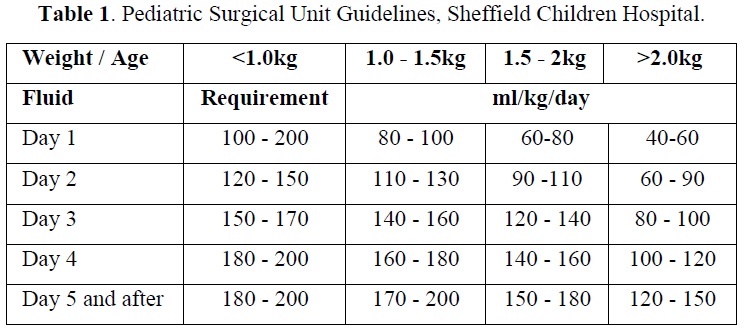-
Publish Your Research/Review Articles in our High Quality Journal for just USD $99*+Taxes( *T&C Apply)
Offer Ends On
Nwate Ledisi*
Corresponding Author: Nwate Ledisi, MD, Leboa Hospital Ltd, Bori, Rivers State, Nigeria.
Received: September 14, 2022 ; Revised: October 08, 2022 ; Accepted: October 11, 2022 ; Available Online: October 18, 2022
Citation: Ledisi N. (2022) How to Use Raw Formula in Calculating Maintenance Fluid Volumes in Low Birth Weight and Premature Babies. J Nurs Midwifery Res, 1(3): 1-2.
Copyrights: ©2022 Ledisi N. This is an open-access article distributed under the terms of the Creative Commons Attribution License, which permits unrestricted use, distribution, and reproduction in any medium, provided the original author and source are credited.
Views & Citations
Likes & Shares
RAW formula which was derived from one of the most comprehensive tables (as at the time of research) is used for calculating Maintenance Fluid Volumes (Vm) in low birth-weight and premature babies.
The raw formula reads thus
Vm = 20 (R + A – W) mls/kg/day
Or
Vm = 0.8(R+A-W) mls/kg/hr.
Where:
Vm = Maintenance Fluid Volume required.
R = Rehydration factor (equals to 5 as per the Sheffield’s table / Liberal Fluid Regimen; or less than 5 (from 3 to 5) for conditions requiring restricted fluid regimen.
A = the age (in days) of the baby.
W = the premature baby's actual weight, in kg.
These three letters constituted the acronym, RAW; after which the formula was named.
It is important to stress that the type of Fluid utilized as Maintenance Fluid, the conditions for administering electrolytes as well as the amount of electrolytes to be administered are the same as when the Tables are being used.
There are advantages using the formula, among which the fact is that it is easier (than the Table to commit to memory); but most importantly is the discovery of the rehydration factor: (R-factor). The R-factor reveals not only the existence of fluid homeostasis in premature or low birth weight babies but also shows within which range of it (R=3 to 5) life can be sustained in this age group. With the range discovered, tables from different centers became better understood and could be reconciled, despite their seemingly differing (recommended) fluid volumes [1].
Certain centers / researchers prefer utilizing Restricted Fluid Regimen based on their observation that such a Regimen was associated with lesser development of and/mortality from patent Ductus Ateriosus, Necrotizing Enterocolitis, Broncho-pulmonary Dysplasia etc. Such centers / researchers will then this be using R with values less than 5. More research will be needed to show the exact value of R that should be used to disallow the development / aggravation of such pathologies. There are therefore two categories of maintenance Fluid Regimens: the Liberal and the Restricted; the Liberal utilizing R with value being 5, and the restricted using R with value less than 5 (Table 1).

EXAMPLES
Question (1). What maintenance fluid volume should be administered to a 2-day old premature baby weighing 1.8kg that would demand restricted fluid regimen [2-5].
Vm = 20 (5+2-1.8) = 20 x 5.2 = 104mls/kg/day
Or
Vm = 0.8 (R+A-W) mls/kg/h =0.8 x 5.2ml/kg/h = 4.2 mls/kg/h.
in whom there is no anticipation for pathological conditions
Question (2). What will be the maintenance fluid requirement for 3-day-old 3kg baby that was delivered pre-term? [Given that the baby has no contraindication against liberal fluid (r=5) regimen.
Answer: using the formula
Vm =20 (R+A-W) ml/kg/day = 20 (5+3-3) ml/kg/day = 100ml/kg/day
Or
=0.8 (R+A-W) ml/kg/h.
= 0.8 (5+3-3)ml/kg/h.
= 4ml/kg/h.
CONCLUSION
Apart from tables, hitherto used in calculating maintenance fluid volumes for such babies, there exists now the RAW formula which can be conveniently used in medical institutions; particularly, in special baby care units (SCBU) / neonatal intensive care units (NICU).
REFERENCES
No Files Found
Share Your Publication :